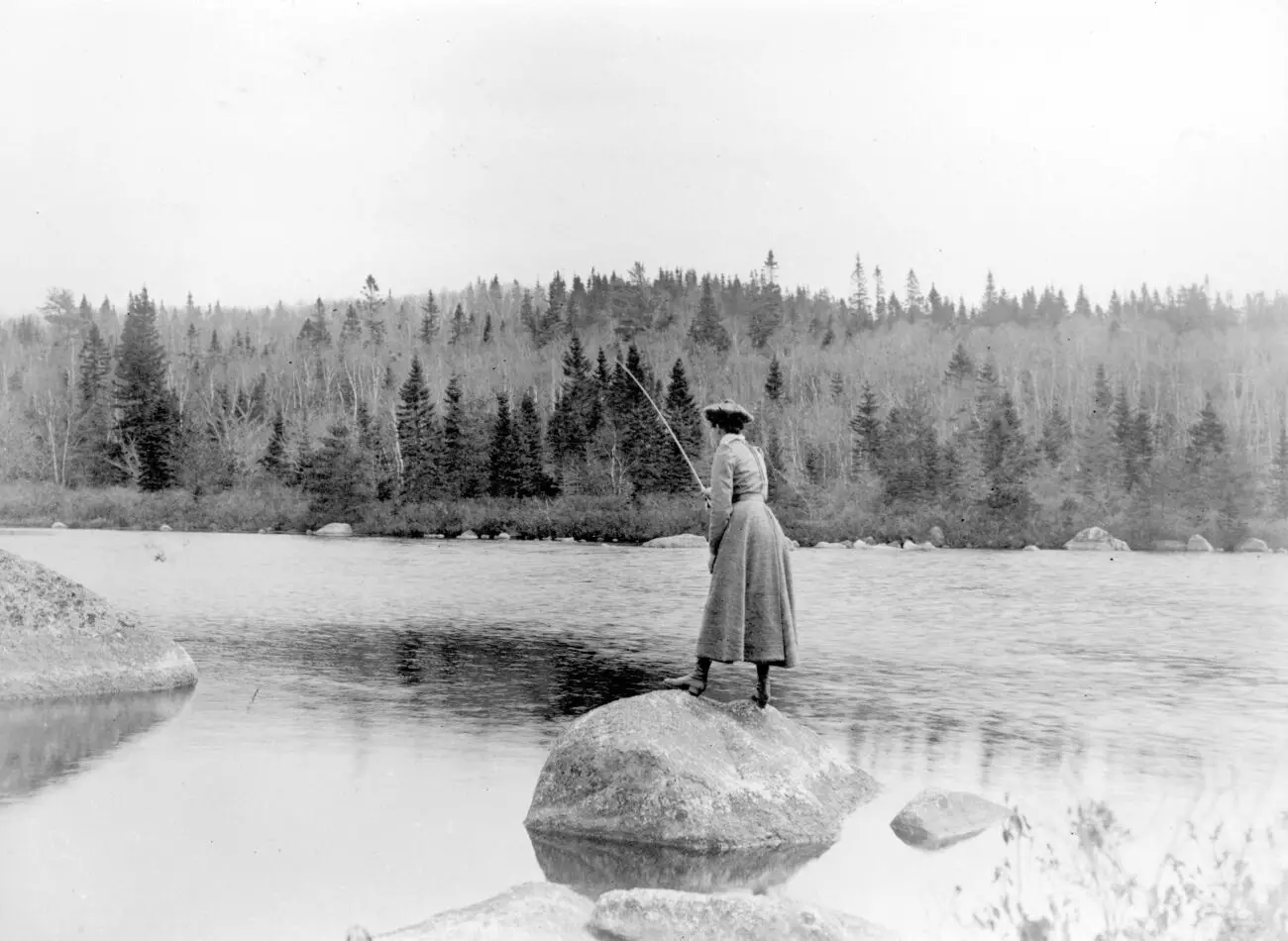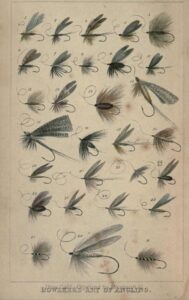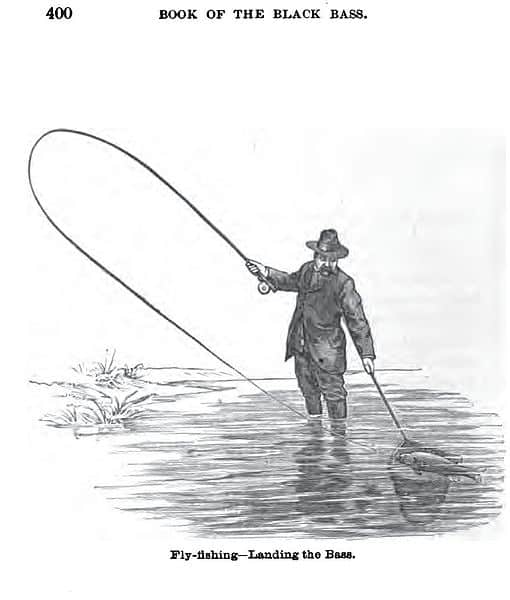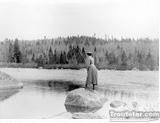This post was last updated on August 15th, 2021 at 11:26 pm
Welcome to the history of fly fishing! Now, some fly fishing enthusiasts will probably know the entire history of fly fishing. However, for those of you who are slightly less clued up, here’s a brief summary of the glorious history of the sport. We’ll talk about fly fishing history, who invented fly fishing, when fly fishing was invented and much more!
 A Brief History of Fly Fishing – Fly Fishing Background
A Brief History of Fly Fishing – Fly Fishing Background
Let’s start at the beginning. So, what is fly fishing? Today, fish are caught by using artificial flies which are cast out on a fly rod and a fly line. The fly line is heavy enough to send the fly to the target. Flies can be made to either float or sink, depending on the anglers preference. Whatever type of fly you use, the principal is the same; you lure the fish in with the promise of food.
The first flies were made with all natural materials, but now flies made of artificial materials are quite common. The flies are made to look like local terrestrial and aquatic insects. The more authentic they look, the more fish people can manage to catch.

In The Beginning – Fly Fishing Origins
When was Fly Fishing Invented?
Fly fishing was invested somewhere near the end of the second century.
Who Invented Fly Fishing?
Exactly where fly fishing originated from, we don’t know precisely. However, many people ask who invested fly fishing. Generally, we credit the first recorded use of fly fishing (with an artificial fly) to the Roman Claudius Aelianus, near the end of the second century. He described the practices of Macedonian anglers:
‘…they have planned a snare for the fish, and get the better of them by their fisherman’s craft. . . . They fasten red wool. . . round a hook, and fit on to the wool two feathers which grow under a cock’s wattles, and which in color are like wax. Their rod is six feet long, and their line is the same length. Then they throw their snare, and the fish, attracted and maddened by the color, comes straight at it, thinking from the pretty sight to gain a dainty mouthful; when, however, it opens its jaws, it is caught by the hook, and enjoys a bitter repast, a captive.’
However, William Radcliff, who wrote a book on the subject of the history of fly fishing, credited the invention of fly fishing to Marcus Valerius Martialis, who was born roughly two hundred years before Aelianus.
Fly Fishing In Great Britain
British Fly fishing began to develop rapidly in the nineteenth century, with the development of fly fishing clubs. Many authors dedicated entire books devoted to the topic of fly fishing. The fly fishers of the nineteenth century developed a somewhat elitist reputation and soon, fly fishing became the only acceptable way of catching fish in slower rivers
Fly Fishing in Japan
The traditional Japanese method of fly-fishing is known as “Tenkara”. The first recorded reference to fly fishing in Japan was in a book, called “Diary of climbing Mt. Tateyama” which was published in 1878.
Tenkara is a fly-fishing method that uses a rod, line and fly with no reel involved. Tenkara is said to have originated in the mountains of Japan as an easier way for local fishermen and inn-keepers to harvest fish. It was developed primarily as a small stream fishing method, which was highly efficient.
Avu Fishing
Another style of fishing in Japan is Ayu fishing. This became very popular with Japanese peasants from its invention in the twelfth century. Andrew Herd, a historian, wrote in his book, “The Fly”, “Fly fishing became popular with Japanese peasants from the twelfth century onward…fishing was promoted to a pastime worthy of Bushi (warriors), as part of an official policy to train the Bushi’s mind during peacetime. “In Ayu fishing, there is no casting technique required so it’s closer to dapping in similarity. Flies for Ayu fishing are thought to have been developed approximately four hundred and thirty years ago.
In the West, fishing rods were mainly made of wood, which is very heavy, so having long rods made fly fishing hard work. Therefore, anglers started to develop running line systems, which enabled them to use shorted rods and longer lines. In Japan, bamboo, which is very light, was used to make long rods, which were light and maneuverable.
How Does Fly Fishing Work in the U.S.A

The fly fishers of the United States are thought to be the first angers to use artificial lures for bass fishing. Once they realized how effective the method was at catching trout and salmon, they began to adapt the patterns to make specific bass flies. These flies are still in use today.
By the end of the nineteenth century, America anglers, like Theodore Gordon, began to use fly fishing to tackle trout rich streams, such as the Beaverkill. This increased the popularity of the sport.
The popularity of fly fishing in America peaked in the early 1920’s, especially in the eastern states of Maine and Vermont. The development of cheap fiberglass rods and synthetic fly lines helped to make fly fishing even more popular. However, it wasn’t until the early 1950’s that fly fishing popularity really peaked.
Fly Fishing History Conclusion
So, there it is, a brief overview of the history of fly fishing. So, go and get your rods and artificial flies and begin your fly fishing journey!
See Related Post: The History of Fly Tying

